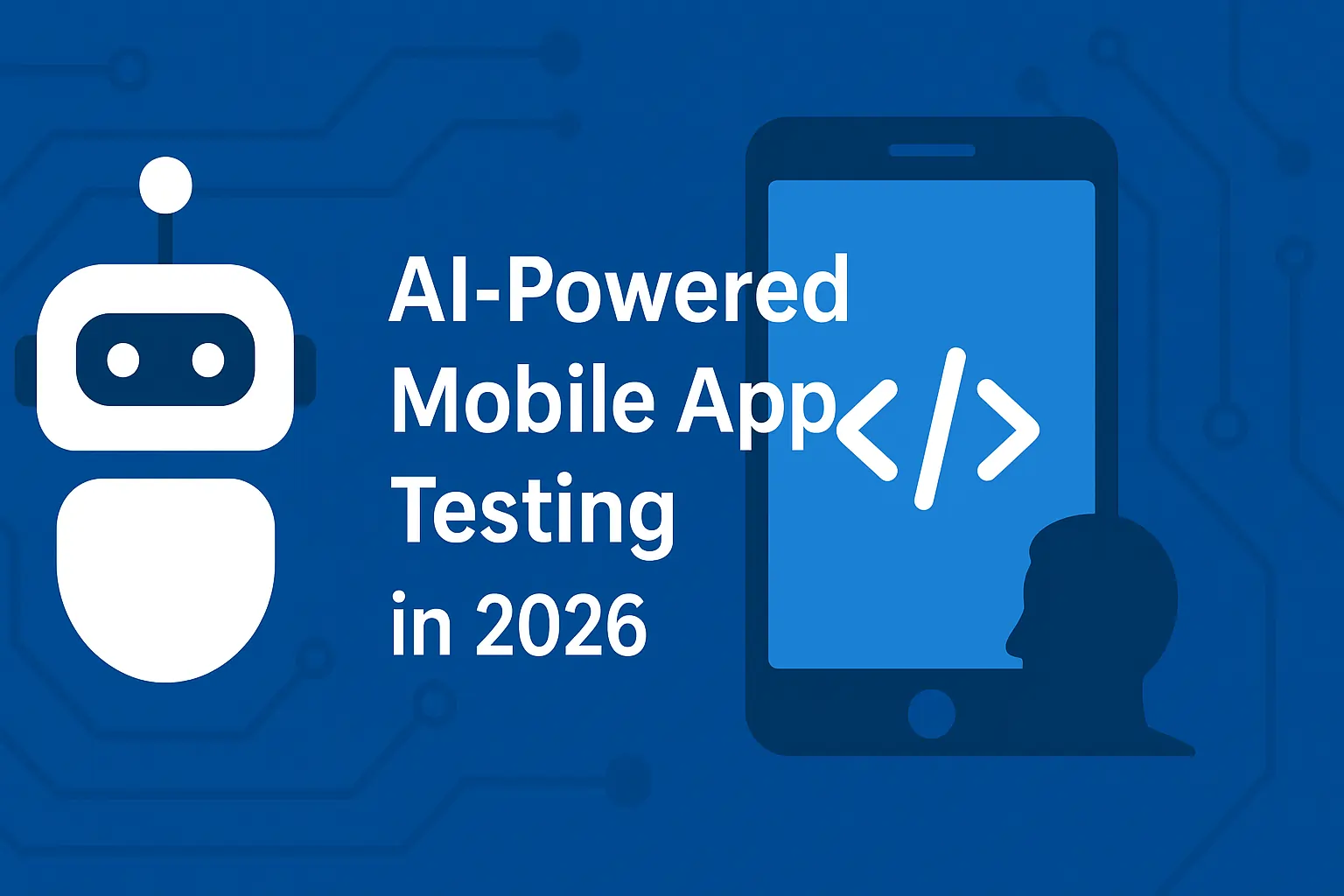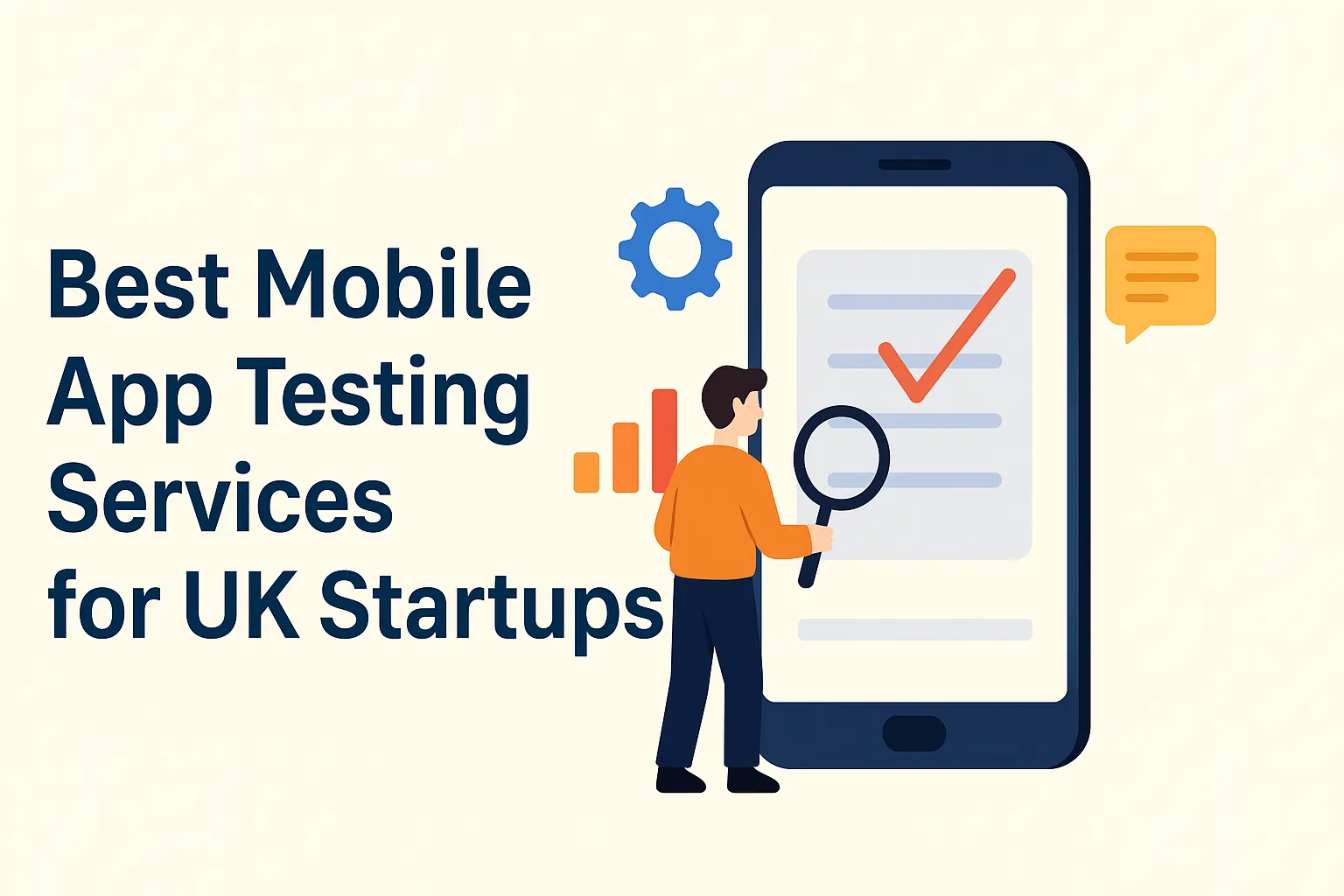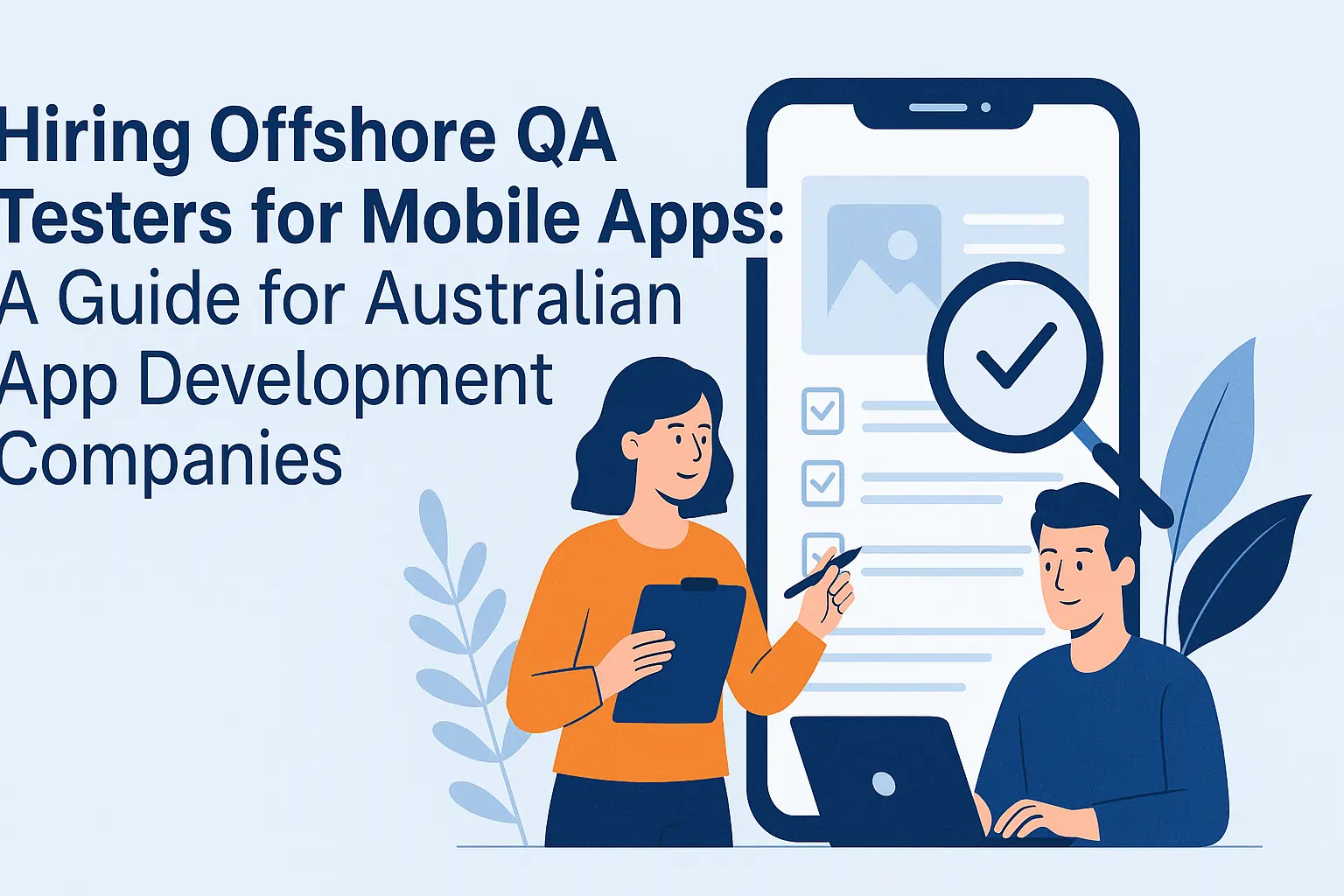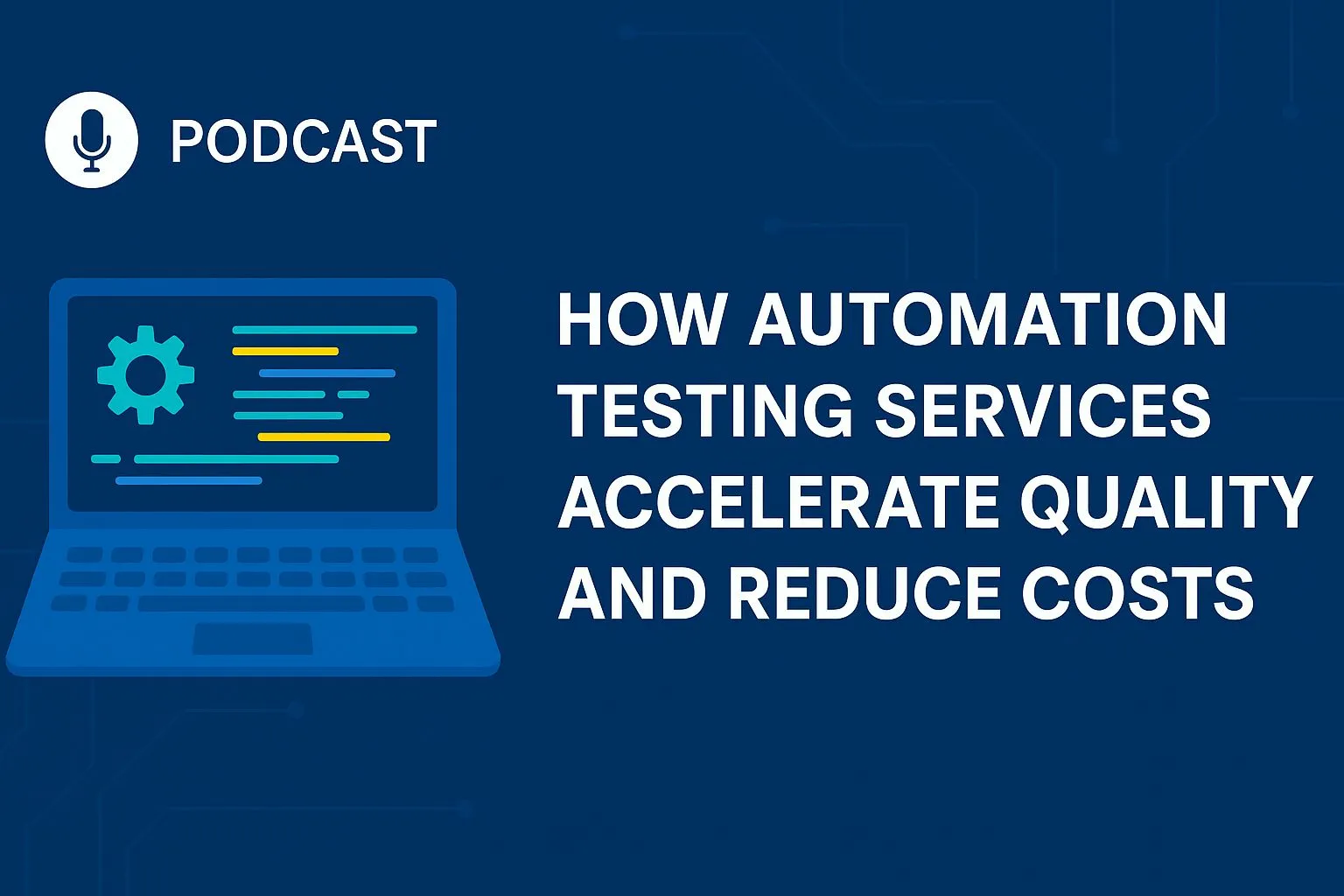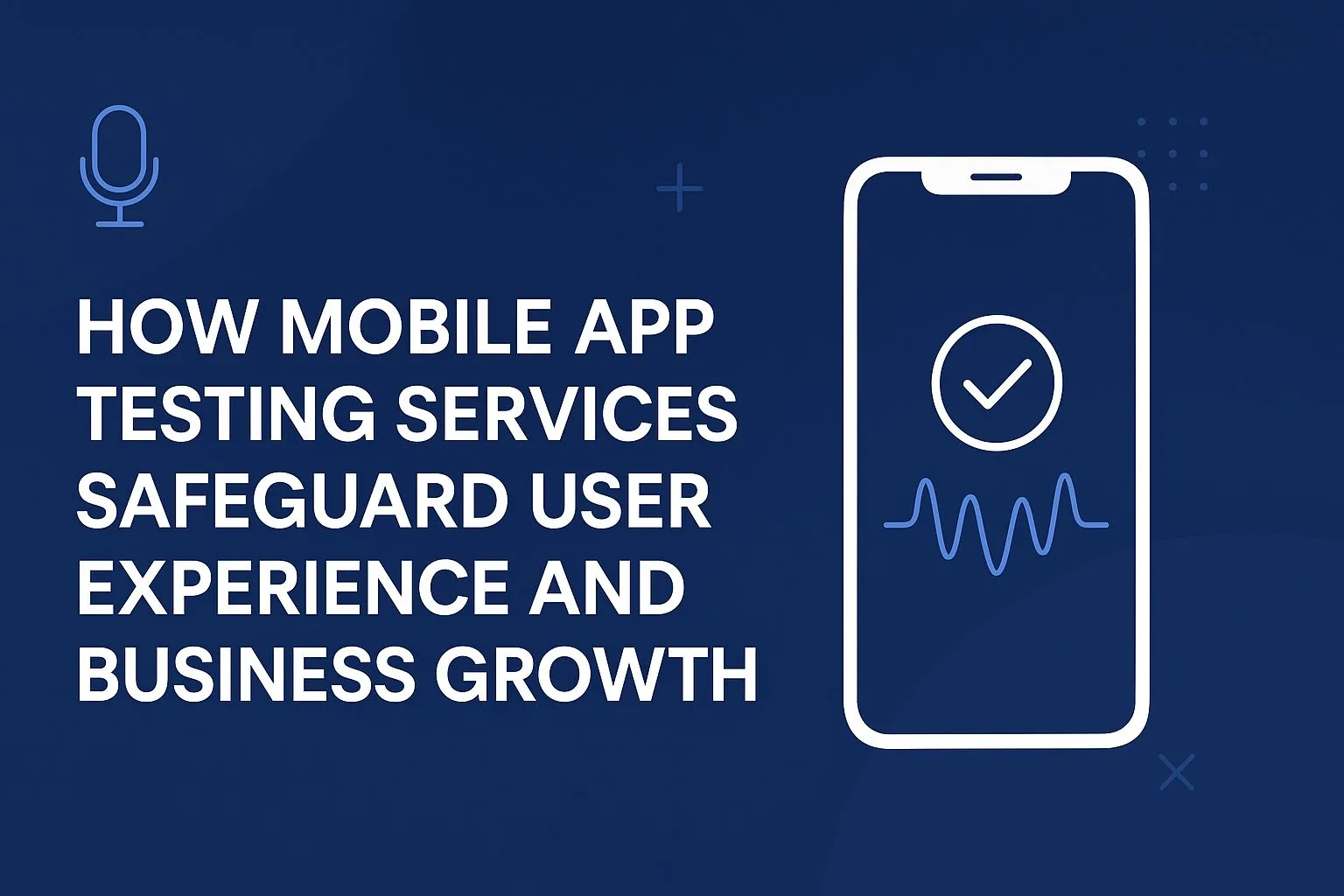A Complete Android Application Testing Workflow: From Test Plans to Test Cases
Ensuring the success of an Android app requires thorough testing at every stage of development. Collaborating with an Android application testing company that provides comprehensive Android application testing services helps confirm the app’s functionality and performance across a diverse range of devices and Android versions. Android QA testing ensures that the app adheres to high-quality standards, while Android testing services address various aspects, including Android mobile testing and automation for efficiency. Both Android mobile app testing and manual testing provide detailed evaluations, while Android app usability testing ensures a smooth user experience. Whether you choose Android mobile testing, Android testing, or Android app testing services, partnering with top Android app testing services guarantees that your app is optimized for performance, security, and user satisfaction before it reaches your audience.
Get Our android app testing services
1. Why Testing is Critical in Android App Development
Testing an Android app goes beyond simply ensuring basic functionality; it’s crucial for confirming the app’s reliability, security, performance, and user experience. By leveraging the right Android app testing services and using Android app testing tools, developers can thoroughly evaluate their app across various conditions. Here’s why Android app testing is indispensable in the development process:
- Verifying Functional Accuracy: Through comprehensive Android application testing, you can ensure that every feature of your app works as expected. Whether it’s checking the login mechanism, confirming the smooth operation of payment gateways, or verifying that data syncs properly across devices, Android app QA testing tools help identify functional issues early on. With mobile app testing tools, testers can run various scenarios to guarantee that all features function flawlessly under real-world conditions.
- Device Compatibility Assurance: Android apps must perform well across a variety of devices, each with different screen sizes, hardware configurations, and Android OS versions. This makes Android mobile testing essential. Utilizing Android app testing services and Android testing services ensures that your app is compatible with the broad spectrum of Android devices. Without proper Android application testing, the app may fail to work correctly on certain devices, leading to dissatisfied users and damaging reviews.
- Optimizing App Performance: Android performance testing is vital to ensure your app runs smoothly, even under heavy use. Testing for performance bottlenecks, like long load times, excessive resource consumption (memory, CPU), or unresponsiveness during multitasking, ensures that your app performs optimally. By using automated Android testing, you can efficiently run performance checks at scale, identifying any potential issues early. This makes sure the app can handle high usage without crashing or lagging.
Challenges in Android Application Testing
While Android app testing is essential, it comes with its challenges. Here are some common obstacles faced during the testing process:
- Device Fragmentation: The open Android ecosystem means there are a vast number of devices with varying hardware configurations, operating systems, and screen sizes. This makes it necessary to ensure compatibility across devices, which requires careful planning and execution. An Android app testing company can help manage this complexity by offering tailored solutions to test across multiple devices.
- Variability of the Network: Mobile networks are unpredictable. Issues like slow bandwidth, intermittent connections, or network drop-offs can impact app performance. To ensure smooth operation, it’s crucial to conduct tests under various network conditions, such as 3G, 4G, and Wi-Fi. Android mobile app testing services can help simulate real-world network scenarios, ensuring your app performs well under different conditions.
- Limited Testing Time and Resources: With tight deadlines and limited resources, effective testing becomes crucial. Testers must prioritize important features and identify critical issues early in the process. Android testing services can help by focusing on the most impactful areas, using both manual testing and automation tools for comprehensive coverage.
By partnering with the best Android app testing services and leveraging tools for Android app testing automation, Android QA testing, and Android usability testing, companies can streamline their testing process and ensure their app is ready for launch.
2. Understanding Test Plans in Android Application Testing
What is a Test Plan?
A test plan is a strategic document that outlines the overall approach, objectives, scope, and methodology for testing an Android application. It acts as a blueprint, guiding the testing process from start to finish, ensuring that everyone involved—whether developers, testers, or project managers—shares a clear understanding of the goals and the steps involved.
Key components of a test plan include:
- Objectives: These define what the testing process intends to accomplish. For example, it might include verifying that all app features function correctly, ensuring the app’s compatibility with various devices, or checking its performance under heavy usage.
- Scope: This section clarifies which aspects of the app will be tested and which ones will not. For instance, if a new feature is being added, the scope will define whether that feature is included in the testing or whether only core functionalities are the focus.
- Strategy: This outlines how testing will be carried out, specifying whether it will be done manually or through automated Android testing. It also details which devices and versions of Android will be included in the tests and the types of testing to be employed (e.g., performance, regression, or functional testing).
- Resources and Roles: The plan also identifies the people and tools needed for the testing process. It specifies which team members are responsible for various testing activities, as well as the tools and devices that will be used during the tests.
- Schedule: The testing timeline is also specified, detailing the various phases of testing, from planning through to reporting. This timeline ensures that all necessary tasks are completed within the required timeframes, and that resources are used efficiently.
A well-prepared test plan is vital for conducting successful Android mobile testing. It helps to ensure that the app performs well across various devices and scenarios. Whether you’re relying on Android testing services, manual testing, or Android app testing automation, having a solid plan in place is essential to achieving the highest quality results.
Benefits of a Well-Defined Test Plan for Android Application Testing
A clear and detailed test plan offers numerous advantages for Android app testing, whether you’re working with an Android app testing company or handling it in-house. Here are the key benefits:
- Guided Process: A structured approach to testing ensures that all stakeholders are aligned, preventing confusion during the testing phase. This is crucial for ensuring consistency in Android mobile testing and Android application testing.
- Improved Focus: A well-defined test plan helps prioritize the most critical features, allowing testers to focus their efforts on core aspects of the app. Whether it’s Android app testing automation or manual testing, this enables efficient allocation of time and resources, ensuring that tests cover essential scenarios.
- Risk Mitigation: Early identification of risks, such as compatibility issues with certain devices or Android OS versions, helps teams proactively address potential challenges. Android QA testing can highlight these issues, ensuring smoother app deployment.
- Efficiency: A solid test plan boosts efficiency, reducing duplication of effort. By organizing tests correctly—be it Android app usability testing, Android mobile app testing, or Android testing service—you ensure tests are executed in a logical order, preventing unnecessary overlaps and saving valuable time.
Utilizing the best Android app testing services ensures thorough coverage and supports the app’s stability, performance, and usability across multiple platforms and environments.
3. Key Components of a Robust Android App Test Plan
Objectives and Scope
In a test plan, the objectives and scope are critical components for any Android app testing company and Android application testing efforts.
- Objectives: Clear and measurable objectives help testers understand what is expected. For instance, testing the login functionality with valid and invalid credentials to ensure proper error handling. These objectives are vital for Android QA testing to validate the app’s core features, performance, and security.
- Scope: It’s crucial to define the boundaries of the testing process. For example, you might focus on Android app testing for core functionality, such as ensuring payment processing works as expected, while excluding minor UI enhancements or cosmetic changes that don’t impact key features. The scope will clarify whether Android mobile testing includes testing across multiple devices or specific versions of Android.
- Test Scenarios: The scope also helps outline the various scenarios that will be tested. For example, you could test how the app handles Android app manual testing scenarios such as login attempts with incorrect credentials or test the app’s response when there is no internet connection during data synchronization. By including Android app usability testing in the scope, you can ensure the app meets user experience standards. These scenarios also ensure compatibility across various platforms with Android mobile app testing.
By leveraging the best Android app testing services, you can ensure a thorough and systematic test plan that includes functional, performance, and security testing with Android app testing automation and Android mobile app testing tools for efficient execution.
Test Environment and Tools
A proper test environment is essential to ensure that tests for Android apps reflect real-world conditions. For effective Android application testing, consider the following:
- Devices and OS Versions: It’s crucial to identify which Android devices (smartphones, tablets) and OS versions (e.g., Android 10, 11, 12) will be supported and tested. This guarantees compatibility across the fragmented Android ecosystem, ensuring your app runs smoothly on different Android devices.
- Testing Tools: To streamline test automation and management, leveraging powerful tools is key.
Choosing the right Android testing service is critical to ensuring comprehensive test coverage. Whether you rely on manual testing, usability testing, or automated testing, partnering with the best Android app testing company or using reliable Android mobile testing tools will significantly improve the quality and performance of your app. These services help ensure that your app meets industry standards and performs optimally across various devices and conditions.
4. From Test Plan to Test Cases: Bridging the Gap
Defining the Transition Process
Making actionable test cases that can be run throughout the testing phase is a crucial next step after creating a thorough test plan. In order to accomplish this, the test plan’s general goals and scope must be converted into precise, manageable actions.
Connecting Test Scenarios to Requirements
Start by decomposing the requirements for the app into specific test scenarios. If the app offers a buy feature, for instance, a test scenario might concentrate on making sure that, when legitimate payment information is entered, the checkout process runs properly. This allows Android mobile app testing to cover all of the key aspects of the app.
Creating Test Cases
Each test scenario should be converted into precise test cases. For instance, for a login scenario, multiple test cases might be created to ensure the app works as expected in all situations:
- Test a successful login.
- Test the app’s response to incorrect credentials.
- Test the “forgot password” functionality to ensure it’s working properly.
Collaboration with Developers
Ensuring close collaboration with developers is crucial. This collaboration helps guarantee comprehensive test coverage across both functional and non-functional aspects of the app. It also ensures that edge cases and potential issues are fully addressed. By involving developers in the process, you ensure that your Android app testing is thorough and that the app’s stability and performance are robust, whether during Android app manual testing or through Android app testing automation.
Test Execution and Documentation
Once the test cases are ready, the next step is to execute them. To optimize testing, utilize Android app testing services or tools like Appium for automation testing for Android apps. This phase also includes documenting each test execution, which helps track progress and log any issues found. The use of testing services such as Android app testing company ensures comprehensive testing coverage on multiple devices and platforms.
Real Device Testing and Automation
To make sure your app works as intended under real-world circumstances, testing on actual devices is crucial. App performance may be checked and tests can be automated with the use of tools like Google Play beta testing and Appium app testing. For example, you can simulate different network conditions, device behaviors, and even test Android apps on actual devices by using automated test Android methods. For testing Android user interfaces and evaluating network performance, tools such as Espresso, JUnit, and Charles Proxy are essential.
Beta Testing and Feedback
Engaging in beta testing on Google Play gives developers valuable user feedback and helps identify issues that might not have been caught during earlier stages of testing. Android app beta testing can reveal important insights into the app’s usability and performance, allowing for final adjustments before full-scale release.
By integrating these strategies into the transition process, you ensure that your Android application goes through a comprehensive testing cycle. This ensures its readiness for launch, making sure that users experience the best possible version of your app.
Leveraging Tools for Streamlined Transition
Test management tools and automation frameworks can assist in this process:
- Test Management Tools: Platforms like TestRail help you organize test cases, assign them to testers, and track progress. They also help in linking test cases to requirements.
- Automation Frameworks: Tools like Espresso or Appium can automatically generate or execute test cases for specific functionalities, saving valuable time on manual testing.
- Version Control Systems: Integrating with tools like Git ensures that test cases are versioned, and teams can collaborate effectively, making sure everyone has access to the latest versions.
5. Anatomy of a Well-Written Test Case
Key Components of a Test Case in Mobile App Testing
A test case should provide clear, concise, and actionable information. The following are the critical components:
- Test Case ID: A special number that each test case has so that testers can quickly refer to it.
- Title: A succinct, evocative title that highlights the goal of the test case.
- Description: A thorough rundown of the test scenario and the anticipated outcomes.
- Test Steps: Detailed instructions on how to carry out the test. Every step ought to be clear.
- Expected Outcomes: The outcome you anticipate following each stage. Verifying whether the test passes or fails requires this.
- Priority: Assists in ranking test cases according to their importance. A key function, such as payment processing, can be the subject of a high-priority test case, but minor user interface components might be the subject of low-priority testing.
- Pre-Conditions: Any necessary configuration or setup required before running the test (e.g., ensuring the app is connected to the internet).
- Post-Conditions: Any cleanup needed after the test (e.g., logging out of the app or resetting certain fields).
Common Mistakes in Android App Test Case Writing
Here are some typical errors to steer clear of:
- Ambiguity: Steer away of ambiguous or confusing actions that can cause testers to become confused. For instance, give a thorough, step-by-step instruction such as “Enter username and password and click the ‘Login’ button” in instead of putting “Check login.”
- Overcomplicating: Make sure your test cases are straightforward and concentrate on particular functional elements. Avoid packing too many irrelevant scenarios into test cases.
- Putting Edge Cases Aside: Problems are especially likely to occur in edge circumstances. Both typical and uncommon scenarios (such as inserting special characters in text fields) should be covered by test cases.
- Absence of Updates: The test cases must change as the application does. Update them frequently to take advantage of new features and modifications.
6. Types of Test Cases for Android Application Quality Assurance
Functional Test Cases for Android Apps
Functional test cases validate the core functionality of the app. They are critical to ensuring that users can interact with the app as intended:
- Authentication: Test cases that verify the login and sign-up processes work as expected, including testing for invalid credentials, password recovery, and multi-factor authentication (if applicable).
- UI Interactions: These test cases check that the user interface components (buttons, menus, sliders) respond as expected when interacted with.
- Business Logic: Test cases to verify the core app logic works. For example, in a budgeting app, test cases could verify that calculations of expenses and savings are correct.
- API Integration: Verify that the app integrates properly with any back-end APIs. This includes checking that data is retrieved, and displayed correctly, and that any error conditions (e.g., no network) are handled gracefully.
Non-Functional Test Cases for Mobile App Performance and Security
Non-functional test cases address performance, usability, and security aspects of the app:
- Performance Testing: Test how the app performs under different conditions, such as handling high traffic or processing large amounts of data. Look for delays, slow response times, or crashes.
- Usability Testing: Verify that the app is intuitive, user-friendly, and accessible. Test case examples include evaluating whether the app follows design guidelines, is easy to navigate, and provides helpful error messages.
- Compatibility Testing: Ensure that the app functions correctly across various devices, screen sizes, OS versions, and configurations (e.g., dark mode).
- Security Testing: Test for vulnerabilities, such as unauthorized access to sensitive data or insufficient data encryption.
7. Tools and Frameworks for Android Test Case Management and Automation
Manual Testing Tools for Android App Testing
Tools for manual testing make it easier to plan, monitor, and carry out test cases:
- TestRail: Teams may plan test cases, run them, and monitor the outcomes with TestRail, a test management solution. Additionally, it aids in connecting test cases to traceability requirements.
- TestLink: An open-source program for monitoring test execution and managing test cases. It facilitates the development and arrangement of test cases into test plans.
- Zephyr:Zephyr is a Jira plugin that allows you to manage test cases right within the Jira interface. It facilitates defect management and test execution tracking.
Automated Testing Frameworks for Android Applications
Automation tools automate regression and repetitive tests, which helps to expedite the testing process:
- Espresso: A well-liked Android UI testing framework that lets you check UI elements and automate app interface interaction.
- Appium: Appium is a cross-platform solution that helps to ensure consistent operation across platforms by supporting automated testing on both iOS and Android.
- UI Automator: An automation framework designed specifically for Android that tests how UI elements and system functionalities interact.
8. Best Practices for Effective Android App Test Case Design
Writing Clear, Actionable Test Cases
To guarantee the efficacy of test cases:
- Clarity and Simplicity: Even for someone who is not familiar with the application, test cases should be clear and simple to comprehend.
- Modular Testing: Modular testing involves concentrating each test case on a single feature. This lowers complexity and facilitates the execution of tests.
- Consistency: To make test cases simple to understand and run, keep your writing consistent.
- Detailed Descriptions: Always provide testers enough background information so they may clearly grasp the purpose of each test case.
Achieving Comprehensive Test Coverage for Android Apps
- Positive and Negative Scenarios: To guarantee thorough validation, write test cases that cover both valid inputs (positive tests) and invalid inputs (negative tests).
- Edge Situations: To find unforeseen failures, test under harsh circumstances (such as high input volumes or odd user behavior).
- Regression Testing: Whenever feasible, run regression tests to make sure that new additions or updates don’t interfere with already-existing functionality.
9. Test Execution and Monitoring for Android Application Testing
Manual Test Execution for Android Apps
Executing test cases manually requires adherence to structured steps:
- Follow Test Steps: Testers should follow each step in the test case, documenting the actual results versus the expected outcome.
- Log Results: All results—whether pass or fail—should be recorded to track the test progress and identify issues.
- Bug Reporting: If issues are encountered during manual testing, clear and actionable bug reports should be submitted to the development team, including steps to reproduce, severity, and any relevant logs or screenshots.
Automated Test Execution for Continuous Integration (CI)
Automated testing is beneficial for saving time and increasing efficiency, especially for repetitive test cases:
- Continuous Integration (CI): Integrate automated tests into the CI pipeline for regular execution, enabling real-time feedback on app quality.
- Test Maintenance: Regularly update and maintain automated test scripts to align with app updates or changes in functionality.
10. Reporting and Analyzing Test Results for Android App Quality
Defect Documentation in Mobile App Testing
Proper defect reporting is key to effective issue resolution:
- Clear Reproduction Steps: Clearly document how to reproduce any defects encountered, so developers can easily identify the root cause.
- Severity Classification: Defects should be categorized by severity (e.g., critical, major, minor) so that the team can prioritize the issues that need fixing.
- Screenshots and Logs: Attach relevant visual evidence (e.g., screenshots or logs) to help developers better understand the defect.
Test Summary and Recommendations for App Improvement
After testing is complete, a detailed test summary should be prepared:
- Test Results Overview: Summarize the results of all test cases (pass/fail) and include insights into the app’s overall quality.
- Defect Summary: List all identified defects, categorized by severity, and provide recommendations for addressing them.
- Recommendations for Improvement: Provide insights into any areas that need improvement, be it functionality, UI/UX, or performance, based on test results.
Conclusion
In conclusion, producing a mobile application that is dependable, high-quality, and easy to use requires a rigorous testing process for Android apps. Every stage of the procedure, from the preliminary planning to running test cases and evaluating outcomes, is essential to guaranteeing the app satisfies the highest requirements. Developers can maximize performance, guarantee compatibility across a variety of devices, and spot possible problems early by utilizing the best Android app testing services, tools, and automated testing frameworks. Moreover, focusing on key areas such as functionality, performance, security, and compliance guarantees that the app functions as expected in real-world conditions. Collaboration with experienced app testing companies can further enhance the testing process, allowing teams to tap into specialized expertise and resources.
By following a structured and systematic approach, teams can not only improve the quality of the app but also reduce the risk of defects slipping through the cracks, ensuring a smooth and seamless user experience. Ultimately, investing in comprehensive Android app testing helps build trust with users, enhances app performance, and contributes to the app’s long-term success in the competitive mobile market.



